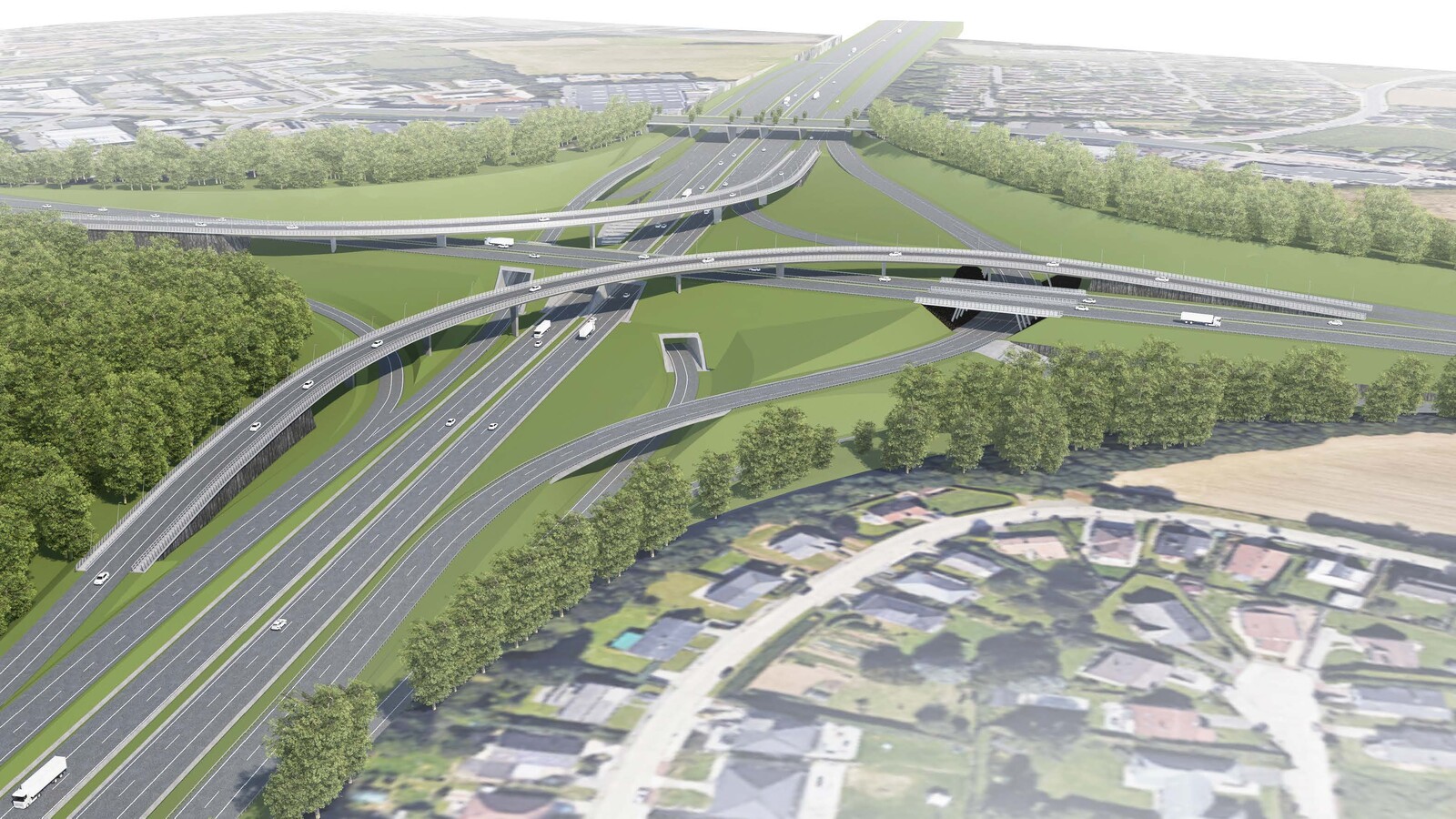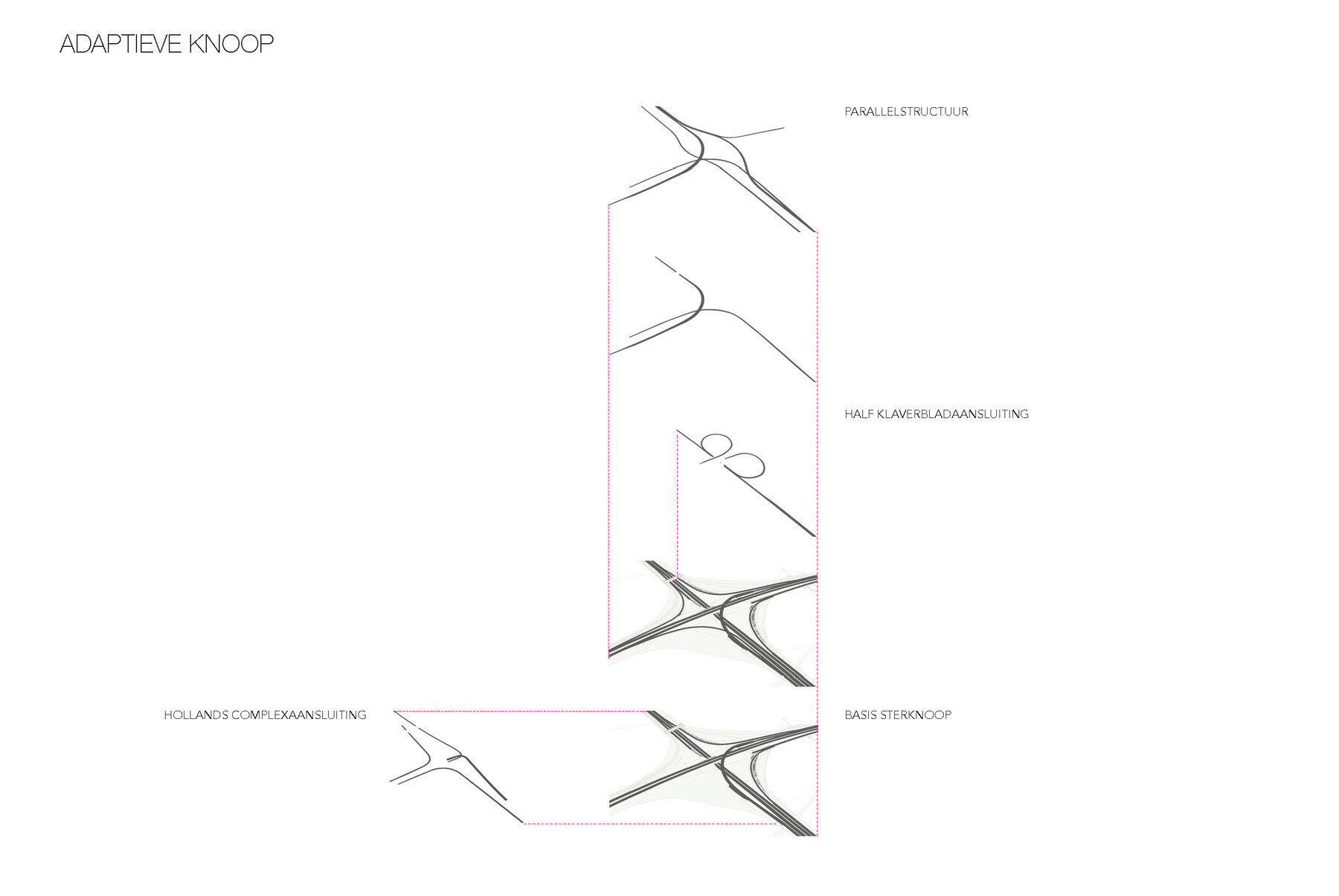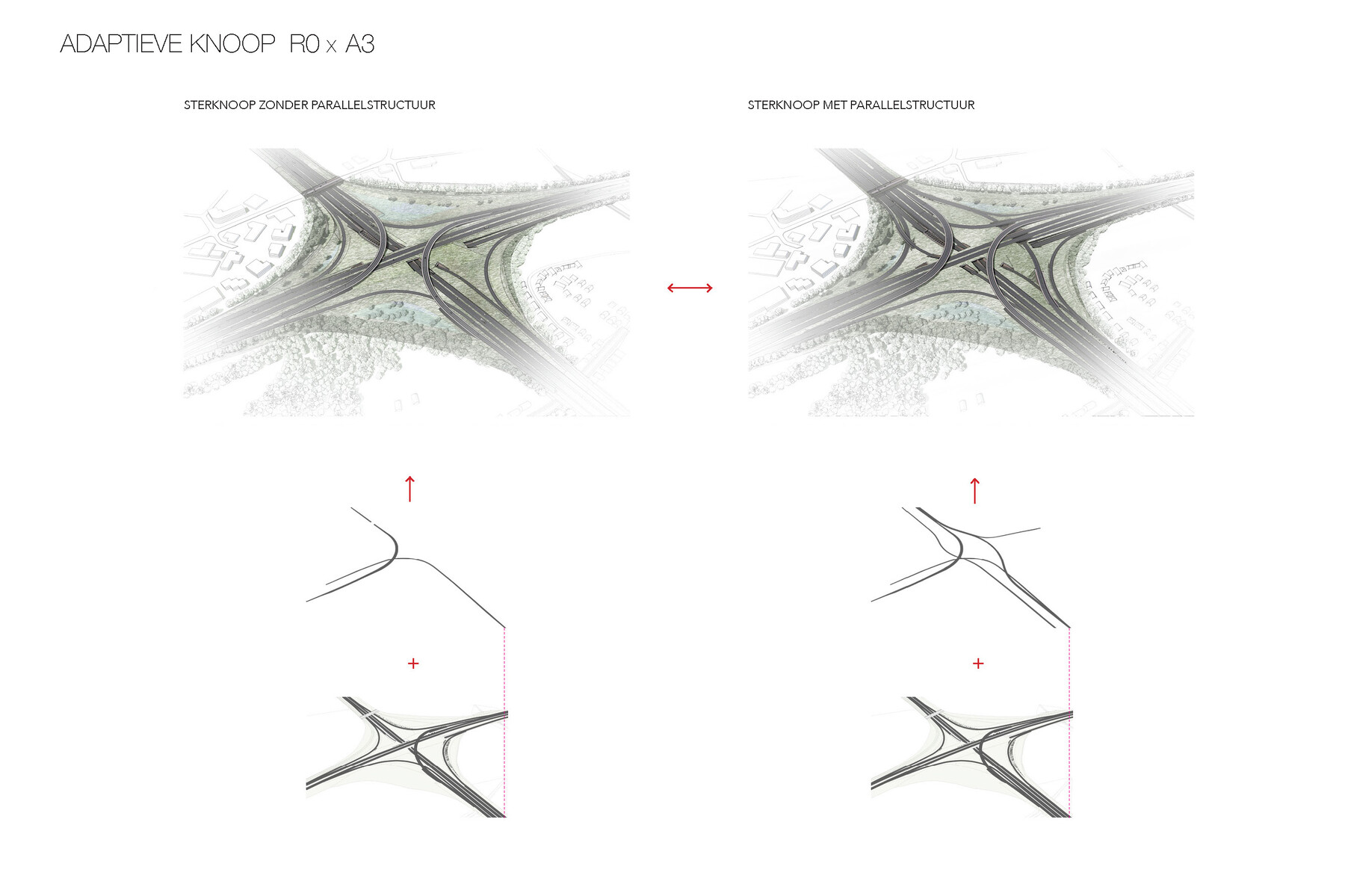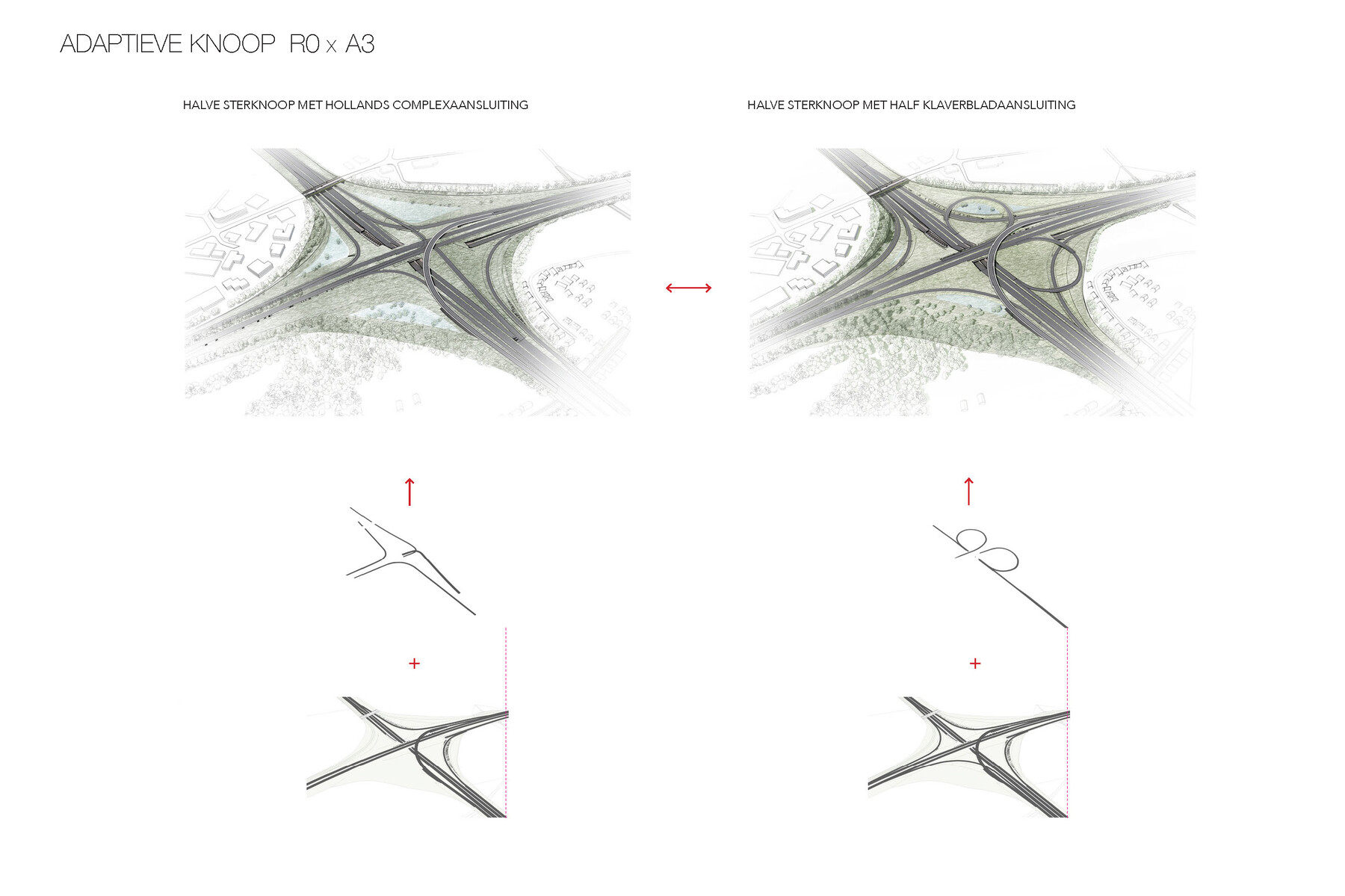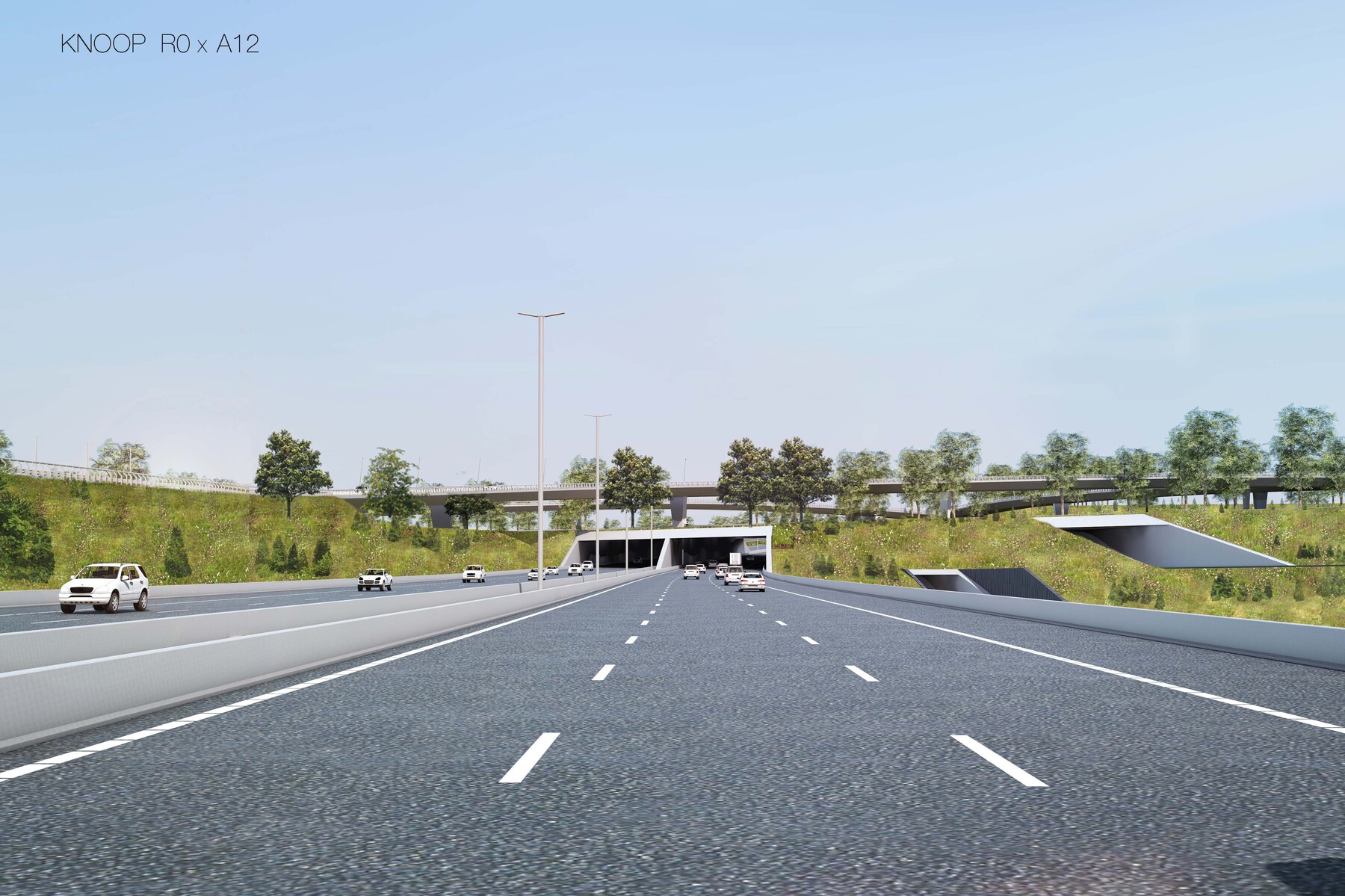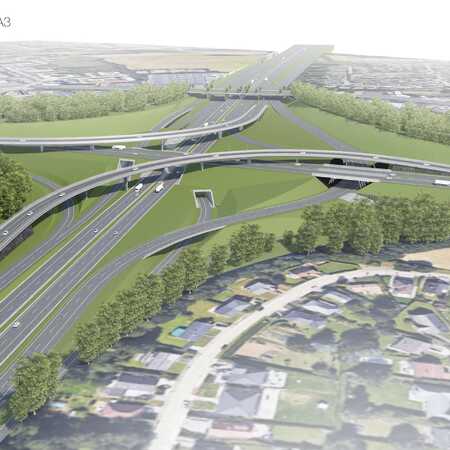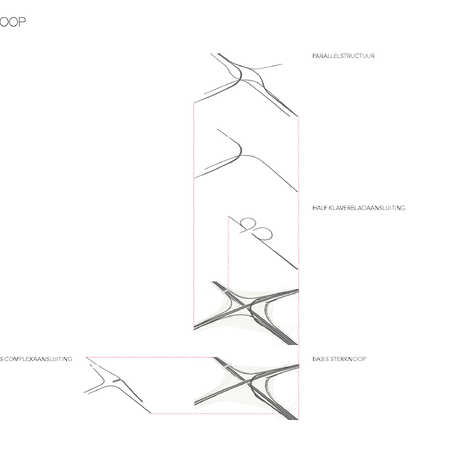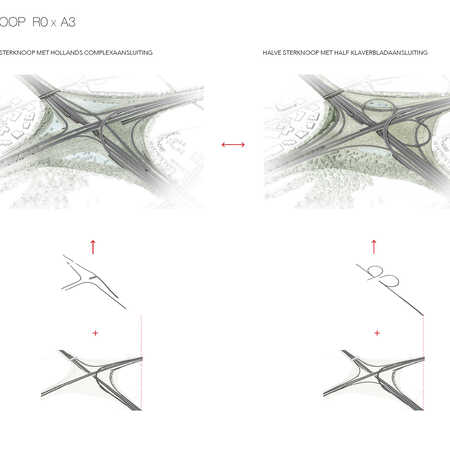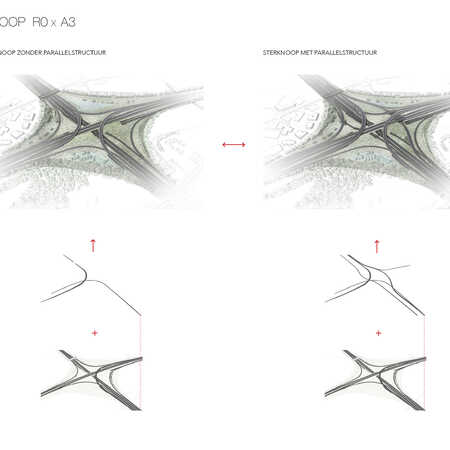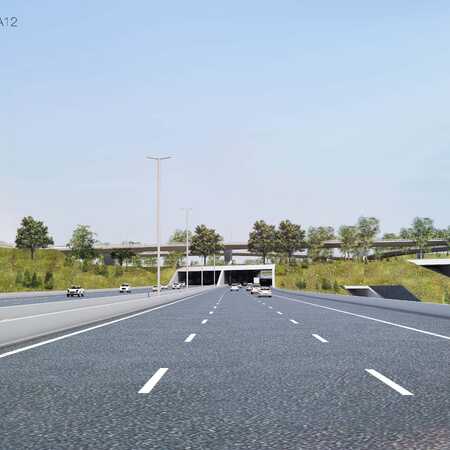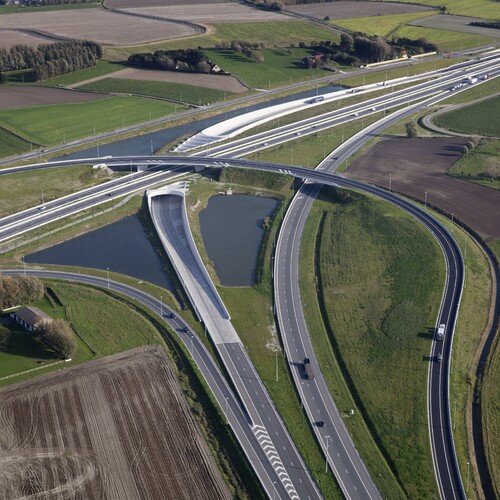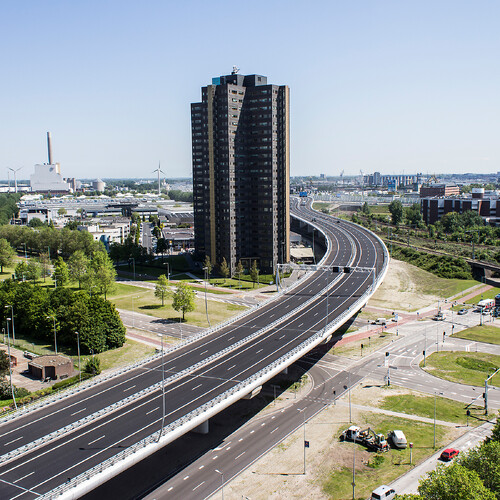ZJA’s designs for the traffic intersections in the Ring around Brussels are based on a model known as the star knot, adjusted to the needs of each location. This enables the greatest gain in space as well as opportunities, in this case, to integrate the motorways into the landscape by means of tunnels and cuttings. For example, should it turn out in the future that it is better to keep through roads and local roads completely separate, then in this design it is relatively simple to introduce a parallel structure. The design makes scaling down to a more modest system of local entries and exits just as easy to achieve. Here adaptive means that little or no demolition is required for adaptations to be made. The adaptive intersection has been designed as a sustainable node for the future
In order to improve the visual aspect as well and to give the project an identity, ZJA’s design for the Ring around Brussels is based on a family of externally related elements, known as its building blocks. These are also used in constructing the intersections. The guiding principle is always to minimize as far as possible the footprint in land use and the visual impact on the surroundings. This means among other things the use of slim, disc-shaped supports that are tapered towards the bottom, sharply chamfered decks to fly-overs, and viaducts that let the maximum daylight through to the space underneath.
Lightness and harmony are the norm throughout, and this results in sloping columns that follow the line of the slopes in the bank, and the use of light colours and transparent sound barriers. The viaducts are incorporated high into their landfalls, to interrupt the surrounding landscape as little as possible, and they figuratively separate the flyovers from the base by the use of the maximum possible spans. With these standard elements, an intimidating no man’s land of asphalt and concrete can be transformed into a green area, into which connecting roads are cleverly integrated, crossing each other comfortably without placing a heavy burden on the environment.
